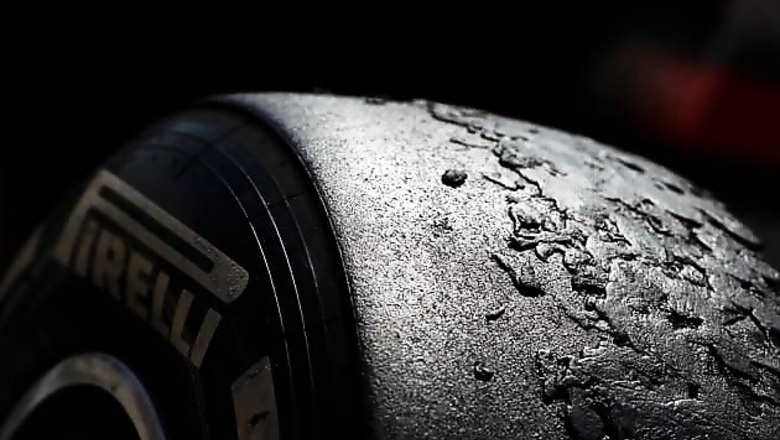
views
Formula One teams contributed to the dramatic blowouts at Sunday's British Grand Prix by mounting rear tyres the wrong way around and running them with low pressures, supplier Pirelli said on Tuesday. Rejecting any suggestion that its product was dangerous, the Italian company said in a statement it would bring stronger rear tyres to this weekend's race in Germany to allay any safety fears and introduce a new range in Hungary at the end of the month.
Pirelli said some teams had deliberately put tyres intended for the right rear of the car on the left, had run them at lower pressures than recommended by the manufacturer and used extreme cambers for performance advantage. However, it shouldered some of the blame for these practices. "Mounting the tyres the wrong way round is a practice that was nonetheless underestimated by everybody: above all Pirelli, which did not forbid this," said the statement.
Pirelli found the kerbs at fast corners, and specifically turn four of the Silverstone circuit, were also "particularly aggressive". Four drivers suffered high-speed rear tyre blowouts at Silverstone - Lewis Hamilton (Mercedes), Felipe Massa (Ferrari), Jean-Eric Vergne (Toro Rosso) and Sergio Perez (McLaren). The debris from the exploding tyres was flung up into the path of cars behind, with Ferrari's Fernando Alonso having one near-miss. Fears about the drivers' safety plunged the sport into crisis with talk of a possible driver boycott.
Pirelli said the rears to be used at the Nuerburgring on Sunday would feature inner belts made of Kevlar, a reinforced fibre that was a feature of last year's tyres, beneath the tread instead of the steel used so far this season. Its 2013 tyres have an 'asymmetric' structure which means that they are not designed to be interchangeable but some teams struggling with high degradation have improved performance by swapping them around.
"The sidewalls are designed in such a way to deal with specific loads on the internal and external sides of the tyre. So swapping the tyres round has an effect on how they work in certain conditions," said Pirelli. "In particular, the external part is designed to cope with the very high loads that are generated while cornering at a circuit as demanding as Silverstone, with its rapid left-hand bends and some kerbs that are particularly aggressive."
MORE STRESS
Under-inflating the tyres can also bring a competitive advantage but puts more stress on them. Pirelli said that, because of the potential danger, it had asked the governing FIA for a technical official to make sure cambers and pressures complied with set parameters in future. It will also be forbidden to swap the new rears for Germany around, since they too are asymmetric. The front tyres remain unaltered.
The tyres to be used at the Nuerburgring had been made originally for teams to try out in Canada last month. But they were not used due to bad weather and opposition from Ferrari, Force India and Lotus whose cars were easier on the tyres and who feared giving up an advantage. Those tyres to be introduced in Hungary at the end of July will have a symmetrical structure with the 2013 compounds.
"I'd like to re-emphasise the fact that the 2013 range of tyres, used in the correct way, is completely safe," said Pirelli's motorsport director Paul Hembery. "What happened at Silverstone though has led us to ask for full access to real-time tyre data to ensure the correct usage and development of tyres that have the sophistication we were asked to provide and extremely high performance that has lowered lap times by more than two seconds on average.
"While we wait for a change in the rules, we will introduce tyres that are easier to manage." Formula One teams will test the tyres for Hungary at Silverstone from July 17-19. Silverstone's owners had said reports that sharp edges on the circuit's kerbs might have been to blame for the blowouts were "absolute rubbish".
Pirelli said the Silverstone failures were unrelated to previous problems of 'delamination' - when the tread is penetrated by debris and separates from the belt underneath, peeling away from the main body, or carcass, of the tyre. "What happened at Silverstone was completely unexpected and it was the first time that anything like this has ever occurred in more than a century of Pirelli in motorsport," said Hembery. "These incidents, which have upset us greatly, have stressed the urgency of the changes that we already suggested."




















Comments
0 comment